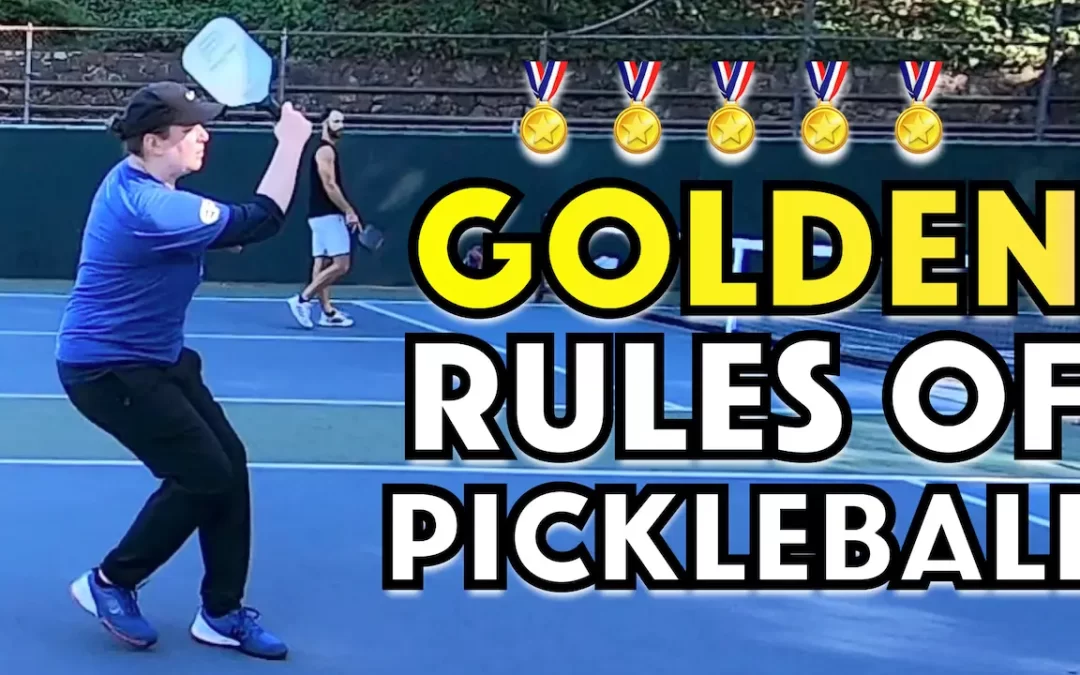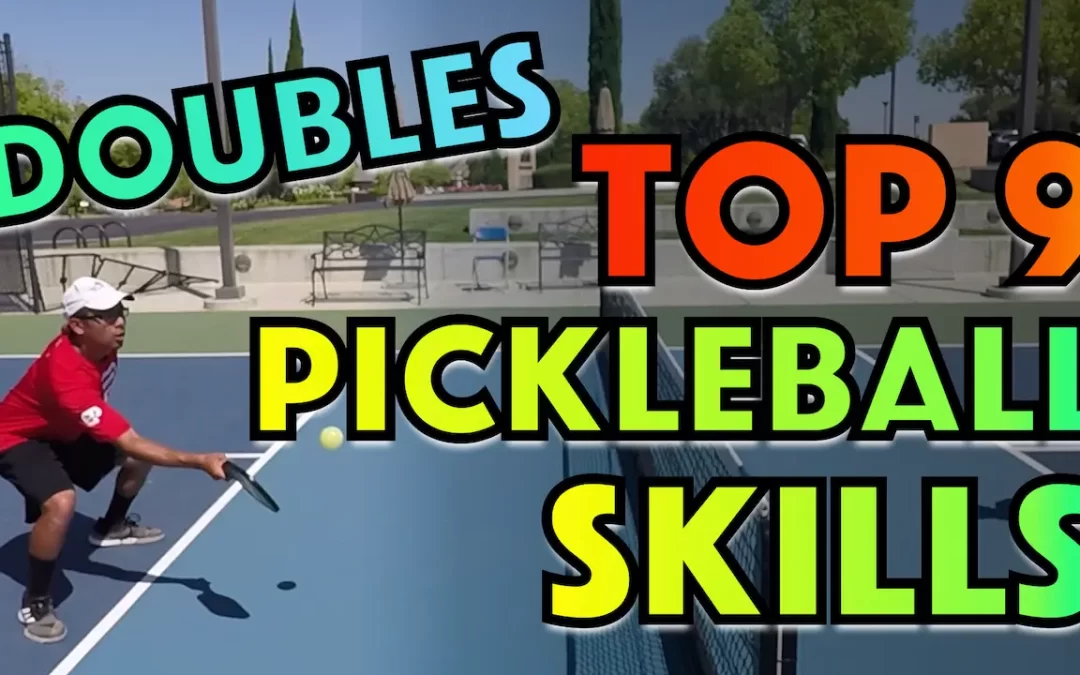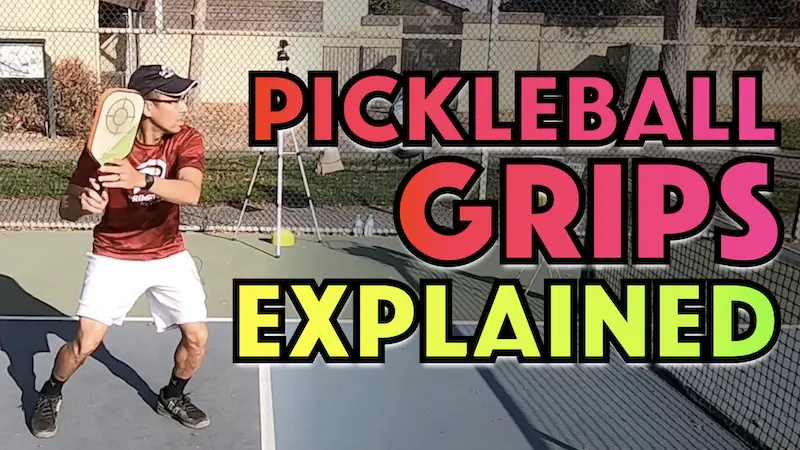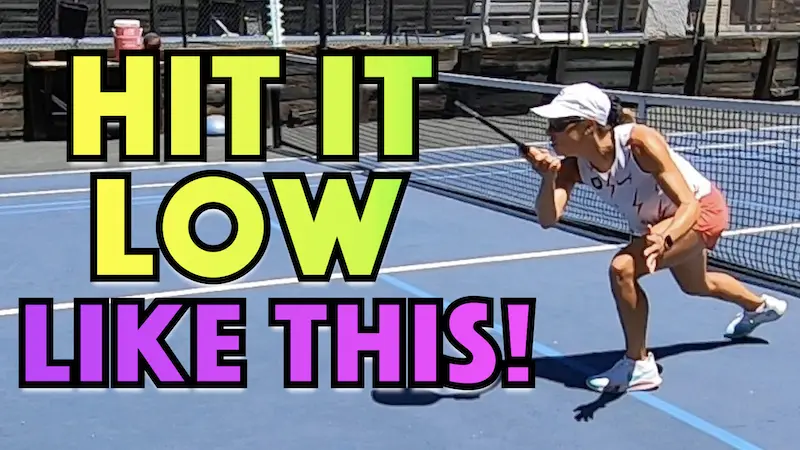One of the most important things to get right when it comes to your strokes is to be using the right grip for the job. If you start out with the wrong grip for the swing you want to use then that’s going to limit the success of your shot.
The continental grip that we cover in detail in this post here, is a very important grip in the game of pickleball and is used on a huge variety of strokes but it does have its limitations.
At times, you’ll want to use a different grip to get the most out of certain types of shots and the most common alternate grip to use is the eastern grip.
We’ll dive deep on the eastern grip on both the forehand and the backhand side. We’ll also cover what type of shots it is used for instead of the continental grip so that you can get the most out of those shots.
When The Continental Grip Works vs. When It Falls Short
To start off let’s talk about why you would change your grip form continental to anything else.
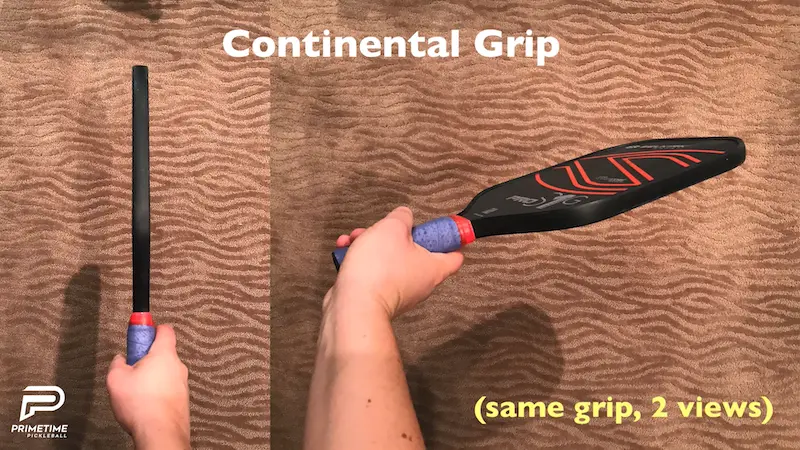
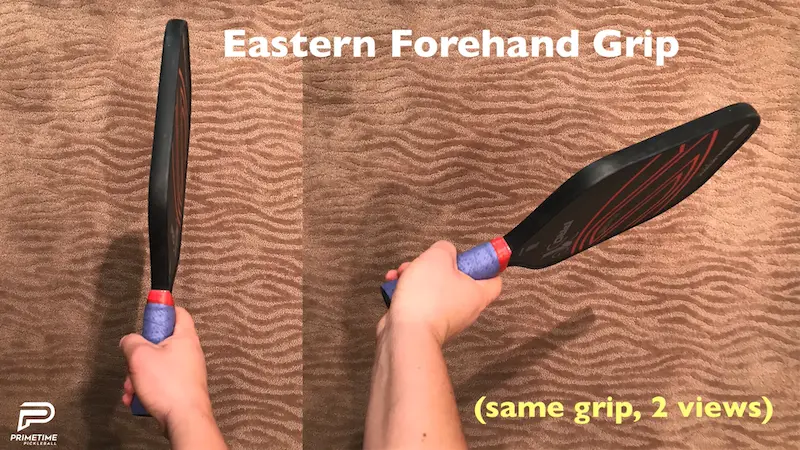
There’s a couple of reasons:
- It’s easier to hit driving shots
- It’s easier to hit topspin
Let’s take a close look on both of these types of shots, why they’re so important in the game of pickleball and why it’s easier to hit them with an eastern grip
Hitting Drives With An Eastern Grip
If you compare the images of the Forehand Continental Grip as compared to the Forehand Eastern Grip above, you’ll notice that in the continental grip, my paddle face is more open (tilted up heading towards facing the sky) and in the eastern grip, my paddle face is more closed (a.k.a facing more forward towards the net).
This is the key differentiating feature of these two grips.
On driving shots, I often want to hit flat (no spin), I am mostly trying to generate big power and hit as hard and as fast as I can. On these shots I am seeking to overwhelm my opponent with power or hit it to an open spot on the court where they can’t get to it. On these types of shots, I want to use an eastern grip.
The reason for that is that in the easter grip (as shown in the pic above), the paddle face is already more naturally and comfortable facing forward which is what I need in order to drive the ball forward.
If I were to attempt the same shot using a continental grip, then I would have to turn the paddle face more closed with my forearm as I come through contact in so that the ball doesn’t fly too high and therefore go out.
That is not as natural out of the continental grip because the angles aren’t right. I will have a less efficient and slower swing in order to make up for it making my shot less impactful than it could be when using an eastern grip.
Hitting Topspin With An Eastern Grip
For all the same reasons as above and a few more that will be outlined below, an eastern grip is needed on a topspin forehand shot.
In order to hit a topspin shot well, I have to get my paddle face even more closed than in the driving flat shot described above.
Furthermore, I have to drop my paddle head below the ball much more than a driving shot.
The paddle head must drop below the wrist in order to facilitate the dramatic low to high motion that is needed in order to generate topspin on the ball.
A reasonably effective driving shot can still be hit out of a continental grip but a topspin shot can’t be hit well out of a continental grip. An eastern grip (or one rotated even a bit further) must be used in order to hit a good topspin forehand shot.
Which Grip To Use In Your Ready Position (Between Shots)
Most high level players will hold their grip in an eastern grip when at the baseline on a serve and when waiting for a return.
Players serve with a forehand motion and since, nowadays, it’s wise to be as offensive as you can with your serve to make for an easier 3rd shot, it makes sense that you would want to hit a driving and/or topspin serve.
Players tend to prefer their forehand so they will also seek to take as many returns as possible with a forehand so mostly will tend to have their ready position grip at the baseline in an eastern grip.
Once they begin advancing to the net they will change to having their ready position grip as a continental grip since they are now much more likely to be hitting drops and reset shots that are predominantly done out of the continental grip because you want a more open paddle face for these shots and as mentioned above, a continental grip is more well suited for that.
Same thing goes when a player as arrived up at the non-volley zone line. Dinks and blocking at the net is done with the continental grip, again because a more open paddle face is needed. However, when you want to attack, you will rotate to an eastern grip if you have time for at least one shot and will dive into how to switch into continental from eastern next.
Changing From Continental To Eastern
As mentioned, anytime our opponents speeds up the ball, we’ll want to be in continental to block volley the incoming hard shot. In a continental grip we can block anything that comes hard and fast on both the forehand and backhand side.
Now, if we see a ball that we can attack we’re going to want to rotate into the eastern grip so that we can flatten out our shot and drive it through the court.
Even if our contact point is going to be slightly below the net, we can still hit an attack with topspin and we will definitely need to have a more close paddle face to accomplish that which the eastern grip will allow for.
When you’re in a continental grip and see that you’re going to want to drive this next shot, you immediately turn the paddle with your other hand.
Your dominant hand will be on the handle, so you use your off hand and place it at the top of the handle and near or on the throat of the paddle.
loosen your dominant grip handle and use your other hand to turn the paddle and set it for your dominant hand to then grip in a now eastern position. So, you need both hands to make the grip change.
You will make this change immediately before you turn for the shot. So as you come out of the ready position you make the change right then.
You’ll use the other hand to also turn the paddle back the other way to go back to continental as needed.
Eastern Backhand Grip
Now let’s jump to the backhand side. The same concepts apply.
We’ll use the continental for dinks, drops and blocks and when we’re seeking to drive or hit with topspin we will rotate to an eastern backhand grip as show in the picture below.
Turning he paddle about the same amount in the opposite way as on the eastern forehand grip we are able to close the paddle face so that it’s more naturally facing forward as we turn our paddle towards that side to hit a backhand.
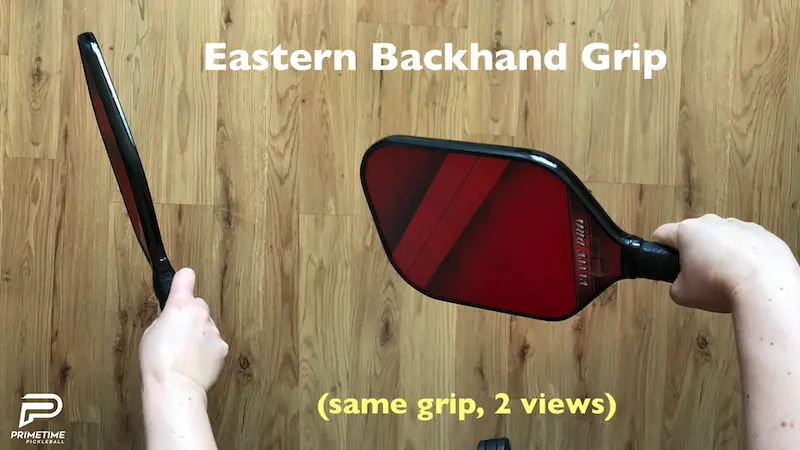
Final Thoughts
Hopefully you’ve learned the benefit of both types of grips and when to use which as well as how to change back and for as needed. Every top player, and all great players, change their grip very often. You might be surprised if you knew just how much.
It’s constant so if you’re not taking advantage of different grips then it’s something you’re going to want to look into.
Remember, generally speaking when you’re hitting neutral or defensive shots you’ll mostly be using the continental grip. So, if there’s a change you’ll be attacked on the very next shot that’s coming your way, continental is where you want to be.
But, if you see or strongly expect to be able to be offensive on your next shot and you have the upper hand in the point then you can is in your forehand eastern grip and get ready to pounce on the next shot.
If different grips isn’t something you’ve not thought about before then it’s something you’ll want to consider if you hope to advance to higher levels of play.

